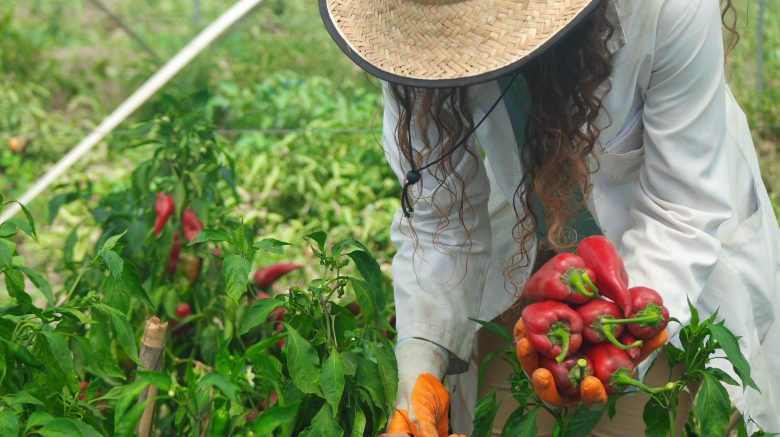Farmers who want to transition from traditional agriculture to smart farming in order to increase productivity and profitability need to prepare for the future. Tabit Founder and Social Entrepreneur Tülin Akın shared a 10-step roadmap for farmers who want to adapt to the technological dimension of agricultural production with Platin.
Due to the impact of the climate crisis on production cycles and the trajectory of the global economy, agricultural production costs are continuously rising. At this point, farmers should focus on producing efficiently using technology and reducing costs. Only this way can they remain competitive.
Smart farming technologies are becoming increasingly affordable and easier to use. For producers, adopting this vision is crucial for raising awareness. It is clear that in the near future, farmers who do not integrate smart farming applications into their business plans will be left out of the game. Farmers who want to adapt to the technological dimension of agricultural production can shape their roadmap in 10 steps:
1 – Focus on accessible technologies
Investors looking to apply smart farming technologies should identify the most challenging tasks in production and think about how technology can simplify them. They should avoid high-cost or difficult-to-use technologies and determine their needs accurately. In rural areas, broadband internet access may not always be available, and solutions requiring wired connections between devices can be inconvenient during production. Therefore, accessible technologies should be used based on price and ease of use. Farmers should also consult peers and other investors using these technologies. Smart farming can be leveraged in two ways: monitoring and managing all stages of production, or supporting the most challenging parts of production to increase efficiency and profitability.
2 – Research the market first
Using smart farming applications to produce high-quality, high-value products—especially those that can enter international markets—improves return on investment and facilitates access to new markets. Research the market and past trends before production and secure sales connections. Avoid starting with perishable products with very short shelf life.
3 – Analyze opportunities correctly
Farmers using smart farming can improve production quality while minimizing yield losses. Emphasizing traceability in marketing creates significant opportunities. Highlight your products’ branding, traceability, and the advantages provided by smart farming technologies.
4 – Calculate investment, maintenance, and data transfer costs
Before investing in smart farming technologies, ensure needs are accurately identified. Choosing technology without this analysis may result in high costs for ineffective solutions. Crop producers use early warning systems, irrigation and fertilization automation, electronic pest traps, automated steering, precision fertilization, drone imaging and spraying, satellite monitoring, greenhouse climate automation, and smart mobile apps. Livestock producers can access milking automation, herd management systems, and other tools at affordable prices.
In the coming years, AI-supported decision systems, blockchain traceability software, and robotic technologies will become more widespread in both crop and livestock farms. Soon, 5G and MB-IoT systems will enable integrated smart farming solutions in rural areas with low bandwidth, simplifying agricultural production. Investment decisions should consider initial costs as well as ongoing maintenance and data transfer expenses.
5 – Produce high-value products as part of your business plan
Smart farmers should plan to produce high-value, safe, and delicious products using technology, leveraging these advantages to provide reliable food to consumers.
6 – Communicate the benefits of the technology
Marketing materials should detail how technologies improve the product. For example, a farm using early warning systems can predict pests and diseases before they emerge, minimizing pesticide use and ensuring safer food. Correctly applied, smart farming can also provide consumers with traceability and transparency, achieving important goals such as early-harvest products, safe and tasty food, and consumer trust.
7 – Seek expert support
Common mistakes include choosing technologies that do not match energy or network needs or production ergonomics, or selecting “data-gathering” devices rather than “information-generating” technologies that require expert analysis. Without knowledgeable staff, farmers cannot fully benefit from the technologies.
8 – Develop a risk management strategy
Technology in agriculture is vulnerable to environmental impacts or incompatibility with new systems. Integrating smart farming applications with the right partners reduces these risks. Technology providers should not offer solutions developed for other sectors as automatically suitable for agriculture.
9 – Stay informed about support, loans, and funding opportunities
Adding smart farming technologies to agricultural and food processing investments supported by the Ministry of Agriculture and Forestry can provide grants of up to 50% and interest-free loans.
10 – Leverage public-private partnerships and NGO networks
Understanding and collaborating with private, public, and NGO actors is critical. Learn how these institutions operate and establish communication channels. Cooperatives and unions involved in production should also be consulted, and local Chambers of Agriculture and provincial and district agricultural directorates must be engaged.

